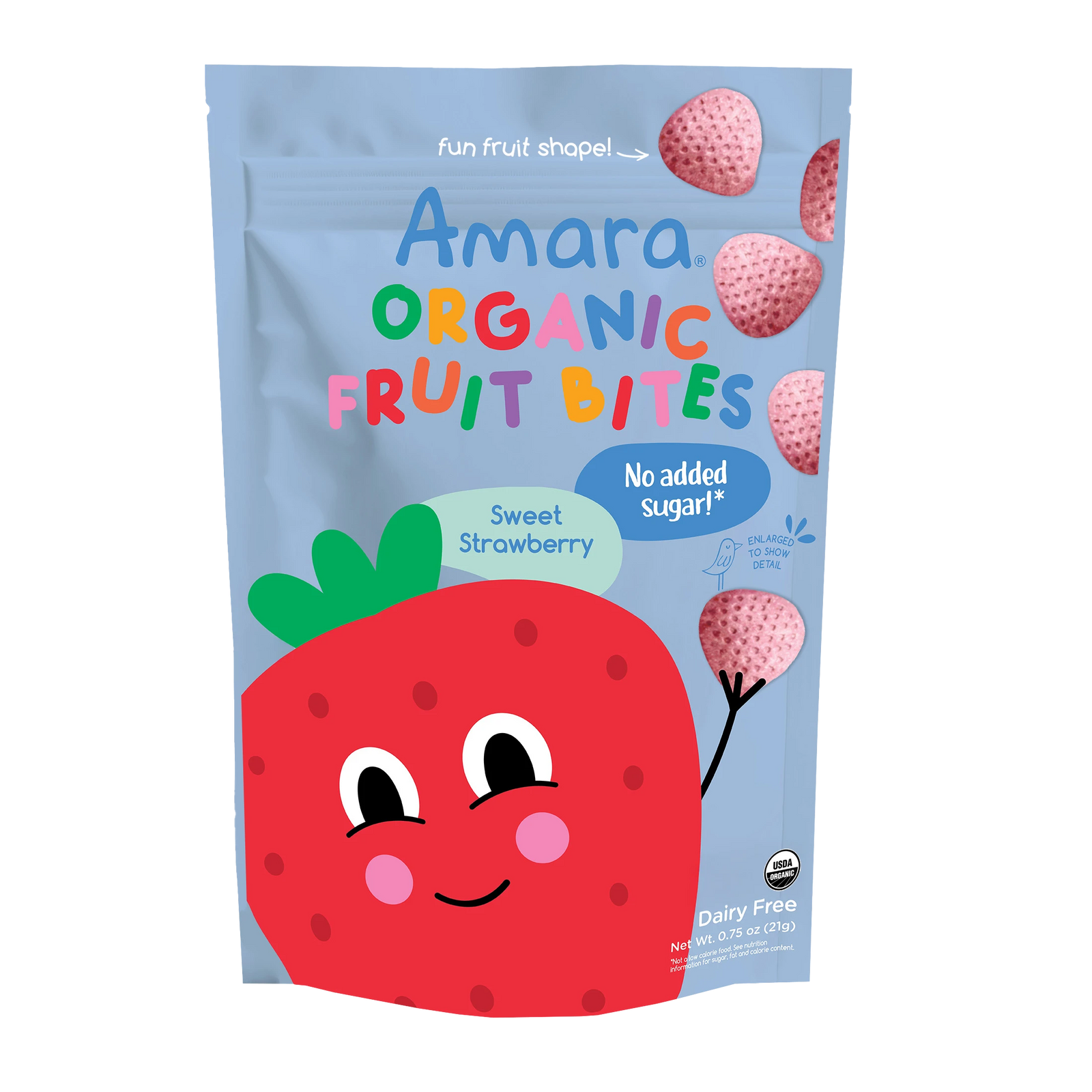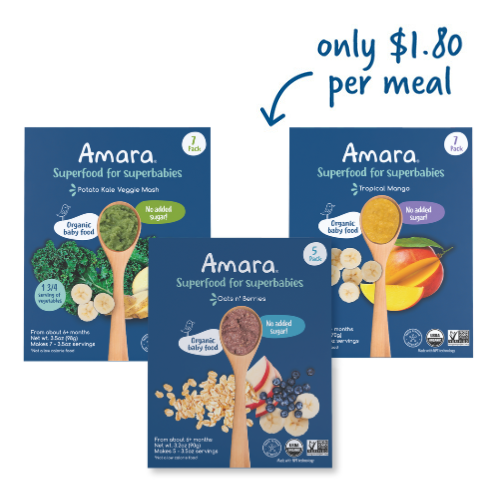
Long before your baby speaks their first words, their communication skills have already been developing!
In this post, we’ll cover common speech and language milestones for the first three years of life, helping you monitor your baby’s development to make sure they’re (generally speaking) on track.
(You might ask: what’s the difference between speech and language? Well, speech means making sounds that comprise words, whereas language means using words—and eventually sentences—to express yourself.)
Strong speech and language skills, as you’ll see below, are closely intertwined with hearing skills. Newborn babies recognize important sounds around them—like your voice. Then, as they grow, our little ones begin to sort out speech sounds that make up the words of language—whatever language that is for your household—to the point that by about six months of age, most babies recognize many of their native language’s sounds. So, hearing, speech, and eventually language abilities mature hand in hand!
Beyond this, we should appreciate that communication development also depends on nurturing physical, motor, sensory, cognitive, and social skills in our little ones as they grow up. Altogether, these different aptitudes lay the foundation for a bright future!

Communication Milestones To Look For:
Newborn-3 months:
- Your baby laughs, giggles, cries, fusses, and otherwise makes noise to express when they’re happy or not.
- Your baby makes noise when you talk to them—cooing and such. They seem to know your voice.
- They react to loud sounds with a startled expression—or are awakened by loud noises.
- Your baby coos, gurgles, and babbles (“pa,” “ba,” “mi”), alone or with you/someone else.
- They respond/vocalize in some way when they’re spoken to, and they use their voice to show likes and dislikes.
- They look or turn toward new sounds; they seem to enjoy—or at least respond to—toys that make sounds.
- They begin to repeat sounds—basic ones like “ooh.”
6 months to 11 months:
- Your baby babbles, putting together longer and longer strings of sounds—like “ba ba ba.”
- Your baby tries to communicate—by pointing; by gesturing to you; by reaching, waving, shaking their head, or otherwise moving; by trying to repeat sounds; and maybe even saying their first word.
- They respond to their name being said and other noises.
- They look at pictures and/or objects when they’re being described.
- They respond to basic requests like “come here.”
- They know words for common household items.
12 to 17 months:
- Your baby can say a few (4-6+) actual/real words and tries to imitate other words they don’t yet understand.
- They can say 2-3 words to identify a person or an object, although their pronunciation might be off.
- Your baby can understand simple questions and requests (“put your toy here”) by nonverbal action.
- They enjoy being read to.
18 to 23 months:
- By now, your baby will know around 50 words, although their pronunciation may still be off.
- Your baby can understand and answer simple yes-no questions.
- Your baby asks for common foods by name.
- They can combine two words into a phrase (“more apple”).
- They can name pictures and/or objects in books.
- Your baby knows a few pronouns (i.e., “mine”).
- They understand the meaning of action words (“sit”), “no” commands, and the size of objects (“get the big ball!”).
- They make animal sounds and can point to their body parts when asked.
- They start to ask questions, like "What's that?", "Who's that?", and "Where's Dad?"
2 to 3 years old:
- Your toddler can combine 3 or 4 words into a sentence.
- They know about 100 vocab words.
- They can follow two-step commands.
- Their pronouns are better; they can use some adjectives (“big”); and they can verbalize where something is (“in,” “on”).
- Their use of the past tense grows, as does their use of plural nouns.
- They can answer simple questions, although strangers may not be able to understand them.
- They can also ask simple questions using inflection (“In here?”)
- They start talking about things that are not in the room.
How can I encourage speech development?

Babies develop speech and language skills best in an environment full of sounds, sights, and the speech and language of others. So:
- Respond to your baby when they attempt to communicate with you.
- Talk to them throughout your day, explaining what you’re doing and what you’re seeing. Look at them when you’re talking.
- Imitate the (weird) sounds they make, including animal sounds.
- Repeat back what they say, and then add to it.
- Laugh when they do.
- Make the same (silly) faces as them.
- Show that you’re pleased when they speak or otherwise try to communicate.
- Show your little one how to imitate your actions. You wave bye-bye; encourage them to wave bye-bye. This teaches them the important skills of conversing with someone—that give and take.
- Books! Read to your child often—like every day!
- Tell them stories.
- Sing songs and share rhymes with them.
What if my child isn’t hitting these milestones?
First off, communication development happens uniquely with each child, so these ^^ milestones should be taken as general ones.
That said, if you think your child is struggling to understand what others are saying or is having a hard time communicating their feelings/thoughts, it may be a sign of a language or speech delay or disorder—or a hearing issue. Book an appointment with your pediatrician and discuss your concerns.
Why do we at Amara care about speech milestones?
Because we care about babies’ health. That’s why we design uniquely nutritious baby food and snacks—food that can power our little ones to work on things like speech and language development.

Our baby blends, designed for 5+ months, are made from whole, organic fruits, vegetables, and grains, sourced directly from growers. Our patent-pending pressure protected technology locks in the taste, texture, and nutrients of the fresh fruits and veggies by gently removing the water. Then we grind down the ingredients. The result? Simple food powders with no additives—just REAL ingredients like black beans, corn, kale, mango, strawberry, pumpkin, pear …. You know—REAL foods! And all you do, as the parent or provider, is add 4-5 tablespoons of breastmilk, formula, or water to the powder, stir, and serve to your baby!
How do you encourage your little ones to communicate?







Leave A Comment